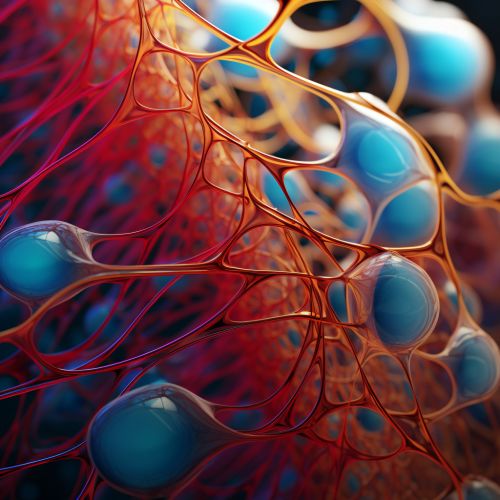Membranes
Introduction
A membrane is a selective barrier; it allows some things to pass through but stops others. Such things may be molecules, ions, or other small particles. Biological membranes include cell membranes (outer coverings of cells or organelles that allow passage of certain constituents), nuclear membranes, the Golgi apparatus, and the mitochondrial membranes. Synthetic membranes are made by humans for use in laboratories and industry (such as chemical plants).


Structure
At a minimum, biological membranes consist of a lipid bilayer. This is a two-layered arrangement of lipid molecules (chiefly phospholipids) that form a cell's boundary. The lipid bilayer is semi-permeable, allowing only certain molecules to diffuse across the membrane. The lipid bilayer is also highly flexible and can heal itself.
Function
Membranes serve diverse functions in eukaryotic and prokaryotic cells. One important role is to regulate the movement of materials into and out of cells. The phospholipids in the bilayer are arranged in two parallel layers, called leaflets. The facing leaflets are called the cytoplasmic leaflet and the extracellular leaflet, which faces the outside of the cell.
Types of Membranes
There are various types of membranes that serve different functions within the biological system. Some of these include:
- Plasma Membranes: Also known as cell membranes, they are selectively permeable to ions and organic molecules and control the movement of substances in and out of cells.
- Mitochondrial Membranes: These membranes enclose the mitochondria, the powerhouses of the cell. They are composed of a double membrane and a space in-between.
- Nuclear Membranes: These are double lipid bilayer membranes which surround the genetic material and nucleolus in eukaryotic cells.
- Endoplasmic Reticulum: This is a type of membrane that forms a network of tubules, vesicles and sacs within cells. It has a rough form (with ribosomes attached) and a smooth form.
Membrane Proteins
Proteins are an important part of membranes, often forming a significant part of a membrane's structure. There are two main types of membrane proteins, integral proteins and peripheral proteins.
- Integral Proteins: These are permanently attached to the membrane and can interact with the lipid bilayer's hydrophobic core.
- Peripheral Proteins: These are temporarily attached either to integral proteins or directly to the lipid bilayer. They are often related to the intracellular processes controlled by the membrane.
Membrane Dynamics
Membranes are not static, they are fluid structures. Lipids can move within the bilayer and proteins can move within the membrane. This fluidity allows membranes to change shape, fuse with other membranes, and repair themselves.
Synthetic Membranes
In addition to biological membranes, there are synthetic membranes which are artificially created. These are used in a variety of applications, including filtration, gas separation, and dialysis. They can be made from a variety of materials, including polymers and ceramics.
